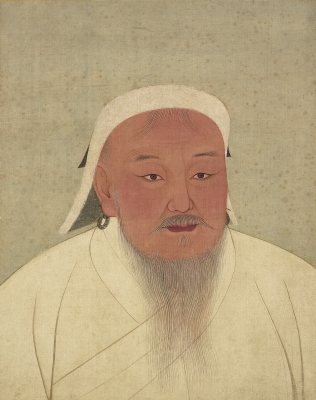
Mongol leader Genghis Khan (1162-1227) rose from humble beginnings to establish the largest land empire in history. After uniting the nomadic tribes of the Mongolian plateau, he conquered huge chunks of central Asia and China. His descendants expanded the empire even further, advancing to such far-off places as Poland, Vietnam, Syria and Korea. At their peak, the Mongols controlled between 11 and 12 million contiguous square miles, an area about the size of Africa. Many people were slaughtered in the course of Genghis Khan’s invasions, but he also granted religious freedom to his subjects, abolished torture, encouraged trade and created the first international postal system. Genghis Khan died in 1227 during a military campaign against the Chinese kingdom of Xi Xia. His final resting place remains unknown.
Going against custom, Temujin put competent allies rather than relatives in key positions and executed the leaders of enemy tribes while incorporating the remaining members into his clan. He ordered that all looting wait until after a complete victory had been won, and he organized his warriors into units of 10 without regard to kin. Though Temujin was an animist, his followers included Christians, Muslims and Buddhists. By 1205 he had vanquished all rivals, including his former best friend Jamuka. The following year, he called a meeting of representatives from every part of the territory and established a nation similar in size to modern Mongolia. He was also proclaimed Chinggis Khan, which roughly translates to “Universal Ruler,” a name that became known in the West as Genghis Khan.
Picture Credit : Google

